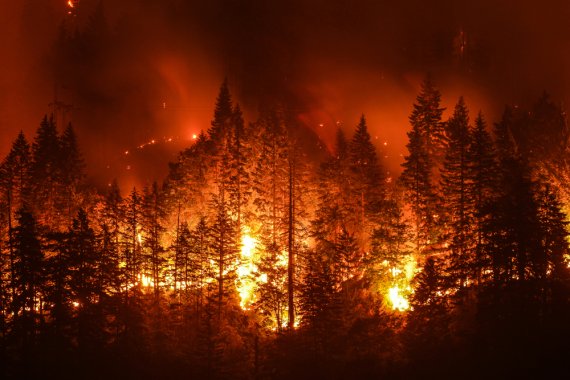© Shutterstock
What consequences do these fires have for nature?
‘If you are to believe the headlines, fire is always a bad thing because it destroys nature. But this is far from being true. Fires often brings rejuvenation. You can usually see grass growing back a few days after a fire, and it also rejuvenates heathlands. In some countries, there are even plant species that require fire or smoke to germinate. Fire is a natural process that is needed to periodically clean up the forest. If your always suppress fires, as is done in the United States over the past decades, the forest gets so overgrown that if fire breaks out, it becomes extremely explosive. Small and more frequent fires are therefore an effective way to limit the risk of large fires.
‘But fires can also cause damage, especially when they recur in the same place, for example if plants have not been able to germinate and are already being burnt again, or if the fire is very intense. Burnt peat areas grow back really slowly, and such fires are now occurring in the United Kingdom. In places where the soil gets hot during a fire and where the vegetation no longer protects the soil, fires can lead to erosion and flooding.’
What could happen if the draught persists?
‘There are wildfires and roadside fires on a daily basis this summer, while we normally have our fire season in spring and not summer. There really are many fires. However, it is good that all fires have remained relatively small in the Netherlands; there have not been any major fires such as on the Hoge Veluwe a few years ago and in Schoorl in 2009. If the drought persists, I expect that these fires will continue. Furthermore, you now see trees drying out everywhere; most birches have become very yellow or even completely withered, and in many places, you can see that trees lose some of their leaves. As the trees dry out, it will be easier for the flames to climb into the treetops, which makes it very difficult for the fire fighters to deal with it.’
What is the best way to fight these fires?
‘It is important to set up the landscape well in advance, in order to have places where the fire is slowed down by a mosaic of vegetation or open areas. This provides the firefighters with a safer place to fight the fire. This is now done using a lot with water, but that is also possible without the use of such amounts of water, for example with the help of a handcrew. Such a handcrew would go into the field on foot carrying chainsaws and water bags, for example, to extinguish small fires, even the ones underground. Another approach is to fight fire with fire by building a backfire. In such a case, vegetation is burnt away from an open strip upwind and in the direction of the uncontrolled fire. In the Netherlands, many nature fires are fought with water from large fire engines. This is a challenge when the terrain is less accessible, and the heavy vehicles could also really damage the soil. So I see a future in additional handcrews and further development of the expertise in the field of strategic fire use.’
How can we prevent fires?
Cathelijne Stoof speaks about preventing fires.
Additional reading (partly in Dutch):
Fire changes jungle into savanna
Hoe overleef je een natuurbrand?
Natuurbranden veroorzaken erosie

